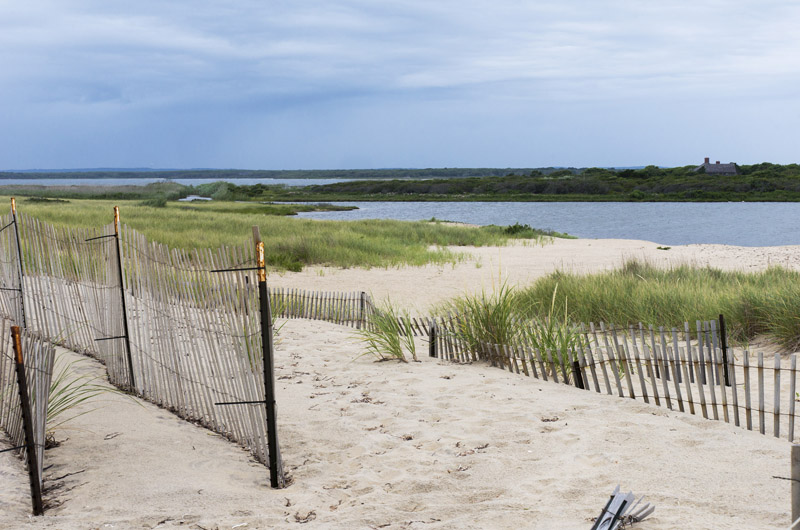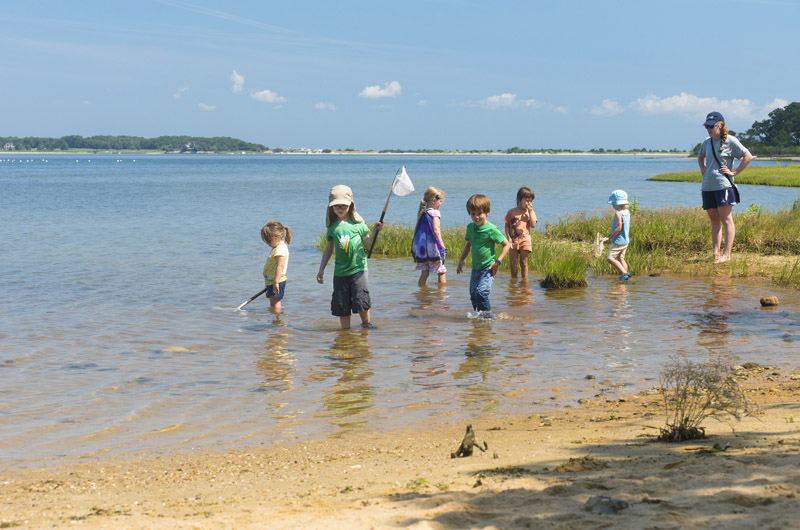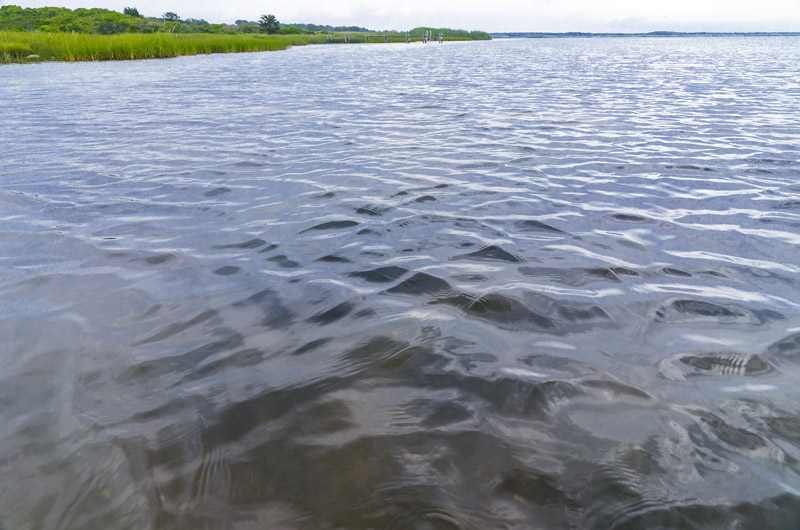As the town of Tisbury pursues options for restoring Lake Tashmoo and the Lagoon Pond, the Massachusetts Estuaries Project, which has provided the scientific foundation for the efforts, has come under fire by a small group of residents who challenge its methods, measurements and motives.
It’s not the first time, and it’s unlikely to be the last, as Island towns begin to look seriously at the future of their coastal ponds. Starting even before it launched in 2002, the MEP has undergone about a dozen reviews, including one in 2011 by a national panel that included engineers, professors and policy experts. That review, commissioned by Barnstable County in the wake of a proposal to expand sewering in Chatham, led to a strong endorsement of the MEP model. To many it was a green light to move forward with the MEP as a guide.
In addition to the general reviews, each estuary report is reviewed by local experts, who often provide key knowledge and feedback along the way. MEP director Brian Howes, responding to the criticism, said he welcomed such feedback, right or wrong, and added that the periodic reviews have only strengthened the project.
“When you come up with assessments that require people to spend money, people have a legitimate position to say, ‘Well, show me,’” Mr. Howes said this week. “It’s been reviewed to death inside and out,” he added of the MEP. “But we still listen very carefully when anybody raises a question.”
At three public hearings held by the Tisbury board of health last month, some cast doubt on a central tenet of the MEP — that coastal ponds have declined mostly as a result of nitrogen entering the watershed and causing algal blooms. Some also pointed to the lack of groundwater measurements that could back up findings that most of the nitrogen comes from septic tanks. Others presented calculations of their own and suggested different causes altogether.
The well-attended hearings were to air a controversial proposed nitrogen tax on new development, a first for the Island.
Donald Muckerheide, a self-described amateur environmentalist, has publicly challenged the MEP, suggesting that groundwater plays no role in the decline of saltwater ponds. He is pressing for mechanical aeration as a way to jump start the growth of plants and microorganisms that could consume the excess nitrogen and bottom sediment, which he believes has resulted mainly from surface runoff and the effects of acid rain beginning some 30 years ago.
Three years ago, Mr. Muckerheide bought a device that he believes could restore the health of Island ponds for a fraction of the cost of sewering or other wastewater solutions. The so-called Toring Turbine consists of a five-horsepower motor with a shaft and an eight-inch disc that spins in the water, creating a negative vacuum and tiny bubbles that can aerate the water.
Buying it was something of a statement, but so far it hasn’t been used anywhere on the Island. “I thought it would be good to have one to show people,” Mr. Muckerheide said this week. “But so far the skepticism hasn’t raised any eyebrows, which is really sad because it’s probably the most significant environmental tool invented in my lifetime.”
Mr. Muckerheide argues that the MEP reports do not incorporate what is called biological oxygen demand, or BOD, which refers to the amount of oxygen that plants and other organisms draw out of the water. He also believes that Island ponds still have enough oxygen, but not the surplus required to support aerobic microbes and aerobic decomposition. That’s where aeration can help, he said.
With fewer than 20 Toring Turbines in the Lagoon, he estimated, enough microorganisms could gain a foothold to make a difference. Healthy sediment along the edges could then be used to “seed” the interior portions of the pond. The only other way to help the ponds, he said, would be to physically remove the toxic sediment.
Mr. Howes and others have strong reservations about both strategies, which they say overlook hydrodynamic and biological processes. Mr. Howes said aeration is used in freshwater lakes, but he is unaware of it ever being used successfully in saltwater ponds.
“In estuaries, it’s very difficult to get enough oxygen, because of the scale involved and the fact that the water is moving all the time,” he said. “In a lake, if you start getting the thing oxygenated, you can build on it. But an estuary, you pump it up and then it goes away.” He added that another form of aeration, which involves pumping water up from the bottom or forcing it down from the surface, could stir up nitrogen in the bottom sediment and cause additional algal blooms.
He said dredging is problematic as well, since the bottom sediment is extremely fine and can’t be used to replenish beaches, adding to the cost of disposal. And because the amount of nitrogen in sediment depends on how much nitrogen enters the system, he added, “in a few years you are right back to where you were before.”
Several comments at the hearings dealt with the issue of groundwater, which many agree is something of a slippery target, since it does not move uniformly, and nitrogen levels change from place to place and at different depths in the water.
Kent Healy, a civil engineer who has studied groundwater flows, criticized the MEP for not measuring groundwater nitrogen in its study of Lake Tashmoo. “They just assumed,” he said. “You can’t do that.” Using his own numbers combined with data from the MEP, he said only 12 pounds of nitrogen were entering the pond each day through groundwater, compared to the 55 pounds calculated by the MEP. He believes the MEP overestimated the amount of nitrogen coming from septic tanks, and miscalculated the amount of rain reaching the groundwater, among other things.
But Bill Wilcox, former longtime water resource planner for the Martha’s Vineyard Commission whose work on the Vineyard helped inform the MEP, said the groundwater theory is a red herring. He said it might take 100 wells at different locations to get a good sense of how much nitrogen enters a pond through the groundwater. In addition to the spacial fluctuations, Mr. Wilcox said, the concentrations change from season to season, so the wells would need constant monitoring. He and Mr. Healy worked together to drill wells around Tisbury Great Pond in the 1990s, but he said Mr. Healy has never adequately responded to his critique that well monitoring would be too costly.
Mr. Howes had a similar view, and said efforts to develop a reliable method to measure groundwater nitrogen in the 1980s had “died a horrible death, and pretty much the entire scientific field said, ‘Let’s move on.’”
In response to concerns at the hearings, the Tisbury board of health dug up what few well measurements it could, which showed relatively low nitrogen levels compared to the pond — leading some to question how the pond could have more nitrogen than the groundwater. Besides the variability from place to place, Mr. Howes said the difference reflects the fact that water in the pond takes five days to reach the ocean, so nitrogen from various sources has time to accumulate in the water.
Tisbury selectman and wastewater commissioner Melinda Loberg believes the existing well measurements are too limited to be useful. She said the town plans to do more testing of wells maintained by the board of health and Tisbury Water Works, and possibly add new ones.
Tisbury recently joined with Oak Bluffs and the MVC in applying for a federal grant to install a permeable reactive barrier to filter some of the nitrogen entering the Lagoon through groundwater. The grant was denied, but Mrs. Loberg hoped there might be other opportunities in the future, and said the project would have involved the type and number of well measurements that could be useful. “I think we all get that that’s good data to have, and it will tell us the efficacy of some of our technologies,” she said of the well measurements.

Mr. Muckerheide argues that wastewater plumes, if they exist, simply travel underneath the ponds. But Mr. Wilcox doesn’t think that is likely, given the nature of the Vineyard’s sandy soils. He explained that saltwater permeates the ground near the pond shores, forcing the lighter freshwater upwards into the shore zones. It’s possible that the high clay content up-Island could cause some impermeability, he said, but he couldn’t point to any solid evidence. “That might be an area worth looking into a little more,” he said.
In the end, Mr. Wilcox said he hopes the Vineyard will avoid the type of controversy that has grown around climate change in the United States. “My suggestion is that we put aside the battle over groundwater and whether we should be collecting more data,” he said. “It reminds me so much of the whole climate debate. If we wait until we have everything pinned down to the last decimal point, we could be in a world of crap.”
Beyond the science, some have argued that the MEP’s focus on wastewater nitrogen reflects an allegiance to the wastewater industry, which stands to gain from increased sewering in the state. Mrs. Loberg noted similar opinions that the industry has prevented the state from updating its septic system regulations. But she sees a gradual warming to nontraditional solutions such as aquaculture and denitrifying septic systems. “I think they are beginning to turn the ship a little bit,” she said. Mr. Howes denied being led by the industry, arguing instead that the MEP was set up to minimize wastewater infrastructure. But he acknowledged that the industry has been involved to some degree since the beginning. “We have to work with everybody,” he said. “Because in some areas the only solution, trust me, is sewering and centralized treatment.” But in recent years, he added, many engineering firms have realized that solutions that cost too much will not get done. “So they are fully onboard with trying to do these alternative, non-infrastructure solutions.”
Mrs. Loberg, whose husband Michael Loberg is on the board of health and leading the nitrogen tax initiative, said she isn’t surprised that the MEP has again come under attack, in light of the proposed regulations in Tisbury.
“Just like they experienced on the Cape — the moment you attach a price tag to something, people’s attentions are much more focused,” she said. “And that’s when you get the very serious objection.”
The board of health has not yet regrouped to discuss the proposal further. “I think they are just going to talk among themselves, maybe develop variations, maybe drop the fee,” Mrs. Loberg said. “But I don’t think they are going to go away and not do anything.”






Comments (7)
Comments
Comment policy »